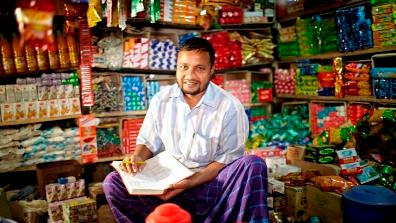The Bangladesh Economic Update for October 2012 projects that GDP will grow at around 6% in FY 13, despite an unfavorable global economy. This will place Bangladesh among the top 35 out of 150 countries in IMF’s October 2012 World Economic Outlook. Bangladesh has maintained 6% plus growth over most of the last 10 years through strong export and remittance growth.
Macroeconomic Pressures Have Abated
Favorable international price trends and monetary tightening has reduced inflation. Inflation reduced to 7.4 percent in September, due to a deceleration in both food and non-food price rises. Slowdown in global demand pushed both fuel and non-fuel commodity prices downward. Bangladesh has once again demonstrated its ability to overcome macroeconomic pressure through timely and adequate policy response notwithstanding the difficult political economy challenges associated with the needed policy adjustments. Bangladesh will need to continue creating fiscal space and keep monetary policy tight for a while.
Food inflation in Bangladesh has been declining mainly because of falling rice prices. Adequate production in two consecutive years and higher government procurement have led to increased level of stock and supply of food grains. A number of safety net programs are in place to safeguard the poor from the impact of a possible global food crisis. With favourable weather condition and satisfactory stock level, Bangladesh food outlook for FY13 appears to be stable.
While fiscal policy is back on track, some concerns remain. Fiscal performance in FY12 was favourable, notwithstanding increasing subsidies. The overall budget deficit in FY12 is estimated at 4.5 percent of GDP. Domestic financing of the deficit declined to 3.2 percent of GDP, from 3.5 percent in FY11. The FY13 budget deficit target - 5 percent of GDP - is modest and is likely to be undershot primarily because of a shortfall in the implementation of the ambitious Tk 550 billion Annual Development Program. Among other concerns are the growing share of subsidies in the revenue budget, which has reduced fiscal space, and rising contingent liabilities.
The financial sector has been somewhat stressed over the last six months. Bank stability has deteriorated in the last six months and capital market volatility has continued. However, banks have been resilient to market shocks such as change in interest and exchange rates. The general tightening of liquidity has increased deposit and lending rates at commercial banks.
Pressures on the balance of payments have eased. The overall balance of payments reversed from a moderate deficit in FY11 to a small surplus in FY12 due to much slower than projected import growth and strong growth in remittances. Taking advantage of this the Bangladesh Bank (BB) has built up its reserve buffer.
Foreign direct investment increased in FY12. World Investment Report 2012 ranked Bangladesh 16th among 74 FDI-recipient countries with a record $1.13 billion FDI inflow. This is only the second time Bangladesh’s FDI has exceeded the billion dollar mark in a single year. However, to attract more FDI the country needs to remove infrastructure bottlenecks, make land more readily available, upgrade skills of the labor force, and address administrative impediments.
Outlook – The Challenges
Bangladesh’s economic outlook is subject to several short-term risks:
- Further intensification of the euro area crisis may deepen Bangladesh’s export slump of the last six months
- Escalation of global food prices may reverse the recent decline in food inflation
- Increases in global oil price will place the balance of payments under pressure again and shrink fiscal space
- Banks are susceptible to credit and market risk and the global economic vulnerabilities
- Increased political instability and labour unrest may depress investments further.
Close surveillance of macroeconomic trends, stronger monitoring and supervision of banks, and building policy space is all that the government can do to guard against these risks.
Policy – Stabilizing and Rejuvenating Structural Reforms
While Bangladesh’s growth is likely to remain healthy, it is yet below potential. Stabilization policies will need to hold ground on creating fiscal space and containing government borrowing from the banking system. The longer-term growth outlook depends on acceleration of reforms to increase investments rates, improve trade prospects, and ensure inclusion.
Most critical to growth will be energy policies that will enable better fuel mix, diversify the sources of power, provide a regulatory framework for private participation in power generation and distribution, and further exploit untapped gas reserves while modernizing and expanding the gas distribution channel.
There is also an urgent need to improve maintenance and management of Bangladesh’s transport system, including ports.

